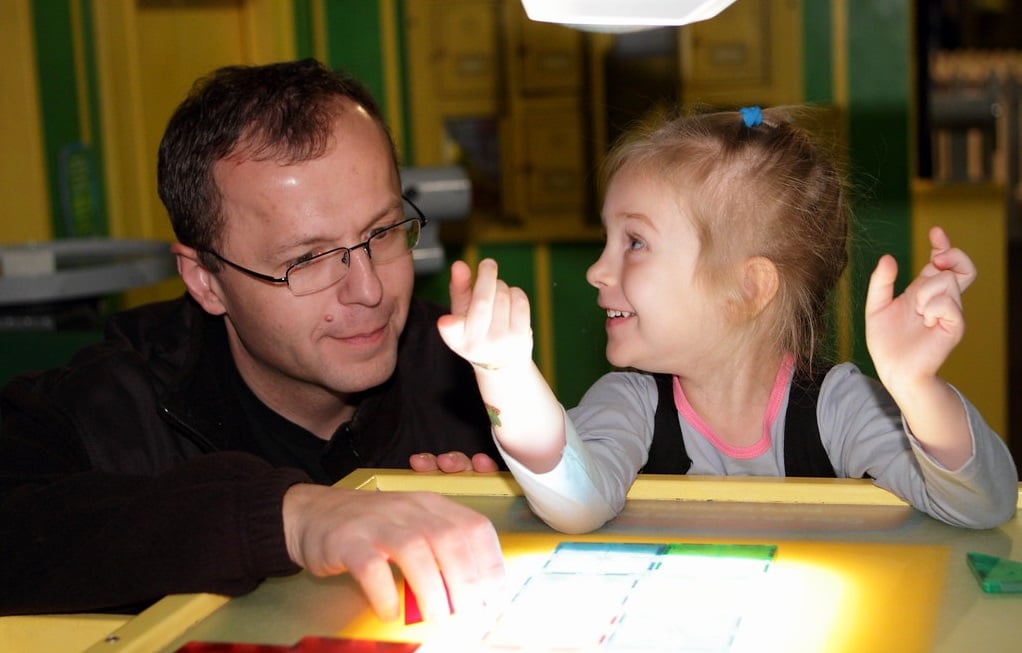
Photo: Pawel Loj on Flickr / CC BY 2.0
Parents more likely to visit galleries with children, says survey
New research finds that a lack of play areas and parking were the most common reasons for negative experiences when taking children to cultural venues.
Parents visit England’s cultural institutions more often with their children than they attend without them, a new survey has found.
The research, commissioned by heritage insurer Ecclesiastical, found 45% of the more than 2000 parents surveyed don’t visit an art gallery without their children, compared to 35% who don’t visit with them.
Additionally, 35% said they never go to museums without their children, compared to 10% who never go with them. And 29% said the same about theatre visits (compared to 23% don’t go with them).
The research also found common perceived barriers to family excursions. For all venues and regions, a lack of play areas and insufficient space to store buggies and pushchairs were highlighted as deterrents.
Negative experiences
For the three different types of cultural venues, a similar proportion of people (about two in five) reported ever having a negative experience during a family visit.
At museums and art galleries, the most common reason for a negative experience was a lack of play areas (both 11%), while at theatres it was a lack of parking (9%).
About a tenth (9%) of respondents said other visitors had been unfriendly, or made them feel uncomfortable, when they took their children to galleries. Smaller proportions said the same about museums (6%) and theatres (8%).
A minority of respondents also said they were made to feel unwelcome or uncomfortable by staff when visiting cultural institutions with their children: 7% felt this way about art galleries and 5% said this about museums and theatres.
Families in London visited these places more frequently, the survey shows – possibly reflecting the high level of cultural funding in the capital. On average, Londoners took their children to museums four times a year, and to art galleries and theatres three times per year.
In other parts of England, families visited museums three times a year, theatres twice and an art gallery once.
Chief Executive of the Heritage Alliance Lizzie Glithero-West said it was encouraging to read that up to 65% of parents are taking their children to art galleries, “but some of the figures show as a sector we can go further”.
“As a parent myself of 7 and 5-year-olds, who has spent a lot of time in cultural sites with them, I know the impact that excellent, engaging activities and an authentic welcome can have on us wanting to return. Conversely, a lack of understanding of children’s needs, or poor welcome can certainly have the opposite effect.”
Better engagement
About one in five parents (17%) said the lack of engagement for children at art galleries prevented them from visiting.
For museums and theatres, the proportion expressing that view was lower, at about 10% and 7% respectively.
Alison Bowyer, Executive Director of Kids in Museums, says some museums and galleries across the UK are “doing excellent work to engage families”, including Leeds City Museum, the most recent winner of the charity’s Family Friendly Museum Award. The institution was praised for introducing baby-friendly curator tours, signposted selfie points and ‘Dadstastic Days’.
“There are many small, low-cost adjustments museums and galleries can make that will make a big difference to the experience of families, making them more likely to become lifelong museum and gallery visitors,” Bowyer said.
“Although many venues have embraced family friendly attitudes, there is still more they can do to welcome this important group of visitors, and the findings of this survey reflect other studies from the past few years.”
Prohibitive costs
Cost was seen as a major factor in parents’ decisions on whether to visit a museum, gallery or theatre, with about a third saying free children’s entry would encourage parents to take their children to each of these more often.
In addition, cost was named as a deterrent for 16% of potential museum visitors, 17% of art gallery attendees and 30% of theatregoers.
A quarter of parents said age appropriate displays would encourage people to take their children to these places, and more still said activities for children would draw them to museums (35%) and galleries (31%).
Bowyer said: “While the cost of a visit remains a significant barrier to many families, it’s incredibly important to remember that being free isn’t always the same as being welcoming and accessible.”
Join the Discussion
You must be logged in to post a comment.